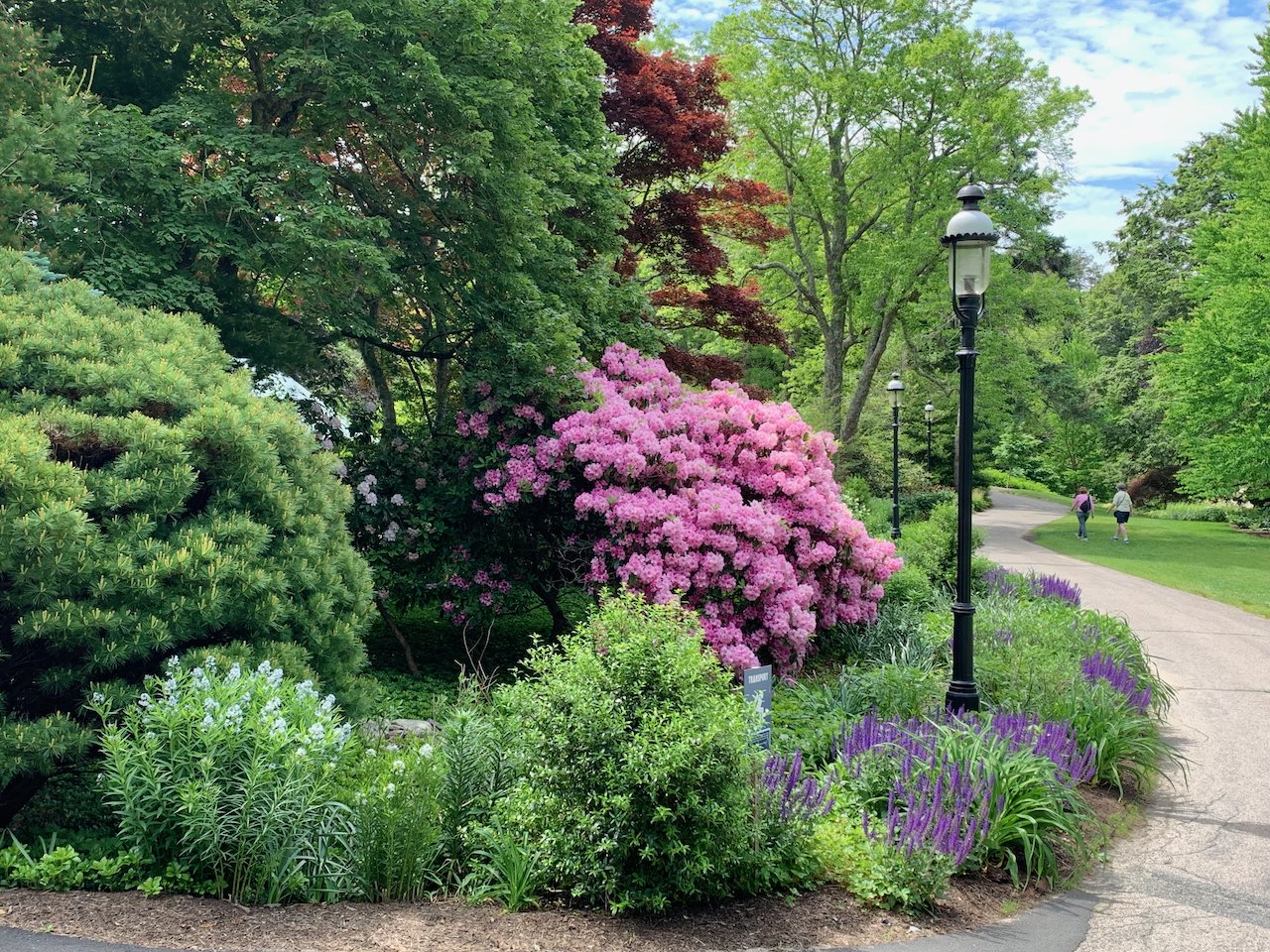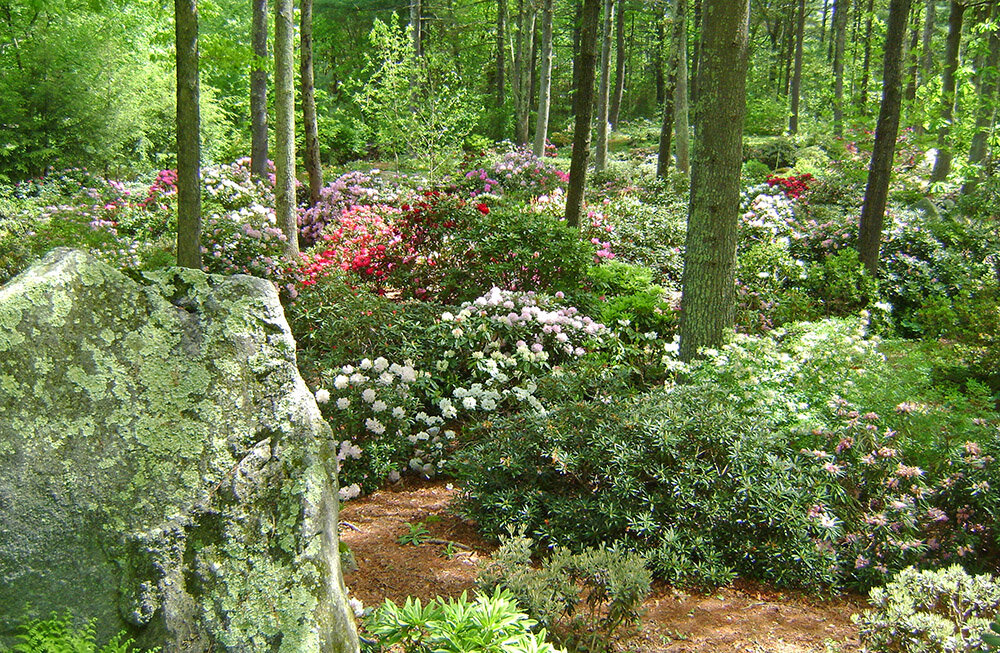Try Tiarella in Your Shade Garden
/In May, the blooms of Tiarella carpet the woodland floor with a layer of foamy haze. The fuzzy flowers are held like little bottle brushes above green leaves that often are centrally marked with maroon. Until recently, Tiarella was only grown in home gardens that were devoted to woodland plants. Now, thanks to the work of plant hybridizers and a wealth of new cultivars, Tiarella has moved into the mainstream as a shade garden perennial.
Tiarella, also known as foamflower, is a deer-resistant wildflower that is native to eastern North America and Asia. Hardy in Zones 3-9, it grows in deciduous woodlands and mountain terrains. It has attractive, low-growing, semi-evergreen foliage. Its leaves are heart-shaped or deeply lobed and are often dramatically patterned. In winter, the leaves darken to red and flatten to the ground. It produces flowers on leafless stems that can range in height from six to fifteen inches. Flowers can be white or suffused with pink.
Roughly speaking, Tiarella can be divided into two types: ground cover and clump-forming. Tiarella cordifolia var. cordifolia is a ground cover that spreads fairly quickly by stolons or runners. It is a good naturalizer. The stolons produce plant offsets that take root and bloom in their second year. Tiarella 'Brandywine' is a cultivar with slightly lobed, hairy leaves with a central maroon splotch. It produces eight-inch tall, graceful white flower spikes that last for weeks. In my garden, it is a well-behaved ground cover that mixes with variegated Solomon's Seal (Polygonatum odoratum 'Variegatum'), 'Purple Lance' astilbe (Astilbe chinensis 'Purple Lance'), Hosta 'Abba Dabba Do', and ferns.
Tiarella cordifolia var. collina is a clump-forming type. Often, the leaves are deeply lobed and resemble the leaf of a Japanese maple. Dark purple or maroon markings along the central veins of some of the cultivars create season-long interest. The flower spikes are usually densely packed and plentiful. The flowers last for weeks and have great impact in the spring garden. I grow T. 'Spring Symphony' and T. 'Iron Butterfly' in my gardens and wouldn't be without either one. Both have semi-evergreen slightly hairy leaves that form healthy clumps that are six to eight inches tall by twelve inches wide. Both look good for the entire growing season. T. 'Spring Symphony' is extremely floriferous, with dark pink buds that open to fuzzy pink flowers. As an added bonus, it occasionally sets seed. T. 'Iron Butterfly' produces fewer flowers, but has dramatic, deeply lobed leaves with strong markings of dark purple. Both add variety and beauty to my shade gardens as they share space with hosta, epimedium, ferns, and Toad Lily (Trycertis).
Tiarella is easily grown in the home garden. It requires partial shade or full shade. It prefers humus-rich moist soil, but adapts to drier conditions once established. It is a low maintenance plant that is virtually pest-free and seldom needs dividing. Tiarella is useful in the garden as a ground cover or as a clumping perennial and looks lovely when paired with spring-flowering bulbs. It is a charming addition to the home garden. It lights up shady corners with its spikes of flowers and creates season-long interest with its intricately patterned foliage.
Tiarella can be purchased locally at numerous garden centers including Weston Nurseries and from on-line sources such as Mason Hollow Nursery www.masonhollow.com.
By Joan Butler
You Might Also Like















